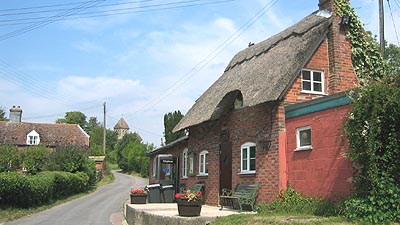 |
 |
|||
|
|
 Fawley FawleyBoth North & South North or Great Fawley was the setting for much of Thomas Hardyís great novel, Jude the Obscure. Fawley was Judeís surname. It was here, at Marygreen as Hardy called it, that Jude spent his early years. The Brown House, from the roof of which he used to look out to Oxford, still stands today as the Red House. Later in the story, Phillotson is seen at the school-house in Fawley and we return again at the close of the book. Hardy chose this as the setting for his most depressing book, because his grandmother had been born here in the 1770s. Like Jude, she was an orphan, brought up by her aunt. She had a very bleak childhood. There is an old tradition from this village that a person could not die comfortably on a pillow of pigeonís feathers. One story is told of an old woman who was having a very hard time on her death bed, when a neighbour suggested her pillow might contain pigeon feathers. It was immediately swapped and the patient passed away peacefully. There is not much at South or Little Fawley. However, it does have a rather interesting castle-looking manor house. It was built by Sir Francis Moore in 1614. Lord Bernard Stuart and his troops quartered themselves there during the Civil War. Aerial photographs have revealed there is a Roman building in this area. The is a deserted medieval village of Whatcombe lies just south of South Fawley. A lone pool is all that remains of the manor house garden. Stones from the old church are said to have been used in building a chantry chapel at Lambourn, while its bells went to East Garston.
|
|||
| © Nash Ford Publishing 2004. All Rights Reserved. | ||||


